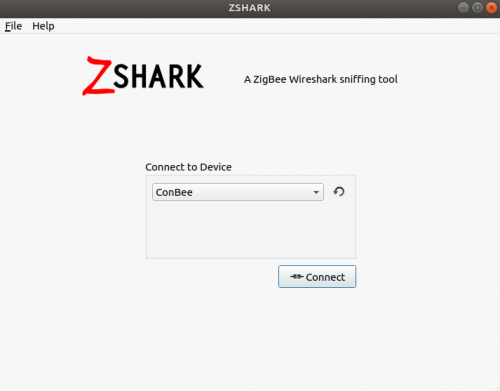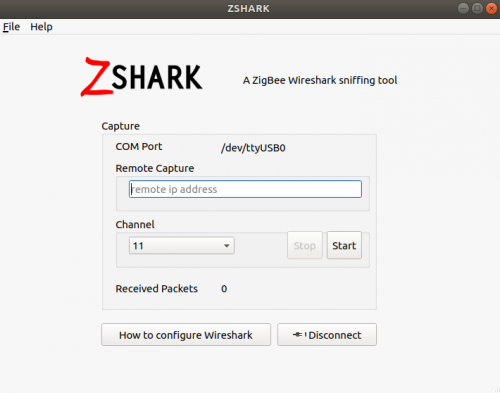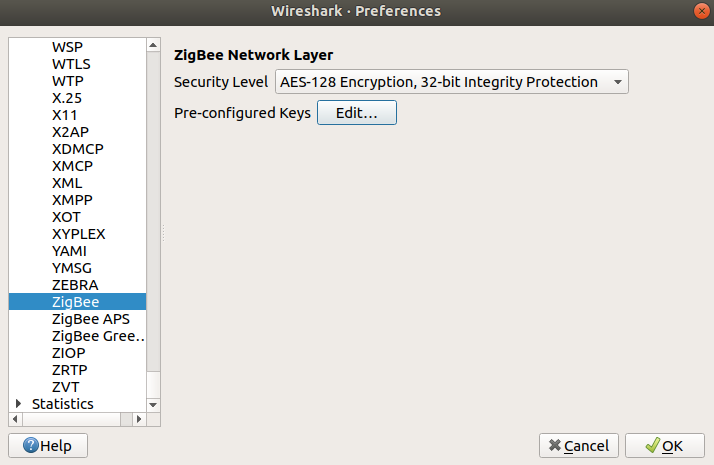ConBee ZigBee USB Gateway: Usage
Summary
This is a description of how to set up and use a ConBee ZigBee USB Gateway device to sniff out and/or analyse ZigBee network traffic between smart home devices.
Requirements
Operating system:
- Ubuntu 18.04
Applications:
- Wireshark
- ZShark (Interface between sniffer and Wireshark, available [here]
- Smart Home Management App, e.g. Philips Hue for Android, available in the [Google Play Store]
Network traffic generating devices, e.g.
- Philips Hue Bridge
- Philips Hue White LED
Sniffing tool
- ConBee ZigBee USB Gateway
In order to complete these steps, it is recommended to be familiar with Wireshark.
Description
Step 0: ZigBee Smart Home Provision
Be sure to have permission to hack into the ZigBee network you want to analyse. Even better, set up your own network to generate some traffic. Minimal requirements: 1 bridge and 1 connected smart home device, such as an LED lamp, preferably with an additional app e.g. for your phone, to control/manage the smart home devices.
Step 1: ConBee Setup
Plug ConBee into a USB Port.
Install the firmware using ZShark:
Open ZShark. You will see this window:
Select "ConBee" and click "Connect".
If the dialog tells you there is "No or wrong firmware found", and pressing the "Install Firmware" button doesn't prompt you to the next dialog, make sure no other USB devices are connected to your computer and try again.
If it still doesn't change, you can also install the firmware manually. For this open a terminal and change into the ZShark-folder (that is where you have installed the application) and run this command (as root):
GCFFlasher_internal -d /dev/ttyUSB0 -f /usr/share/zshark/fw/sniffer_v1_0.bin
where
- /dev/ttyUSB0 is the path to your device
- /usr/share/zshark/fw/sniffer_v1_0.bin is the path to the firmware you want to install
Both paths are the absolute paths, and they may certainly differ from this solution. Make sure you look up the correct paths on your own system and use them accordingly.
If everything worked fine, you should see a dialogue like this
where the path in the COM port identifier shows you the sniffer was detected correctly.
The remote capture IP is to use if you decide to send the captured data to Wireshark on another machine. In my case this was not necessary, as I used Wireshark on the same device.
You can choose a ZigBee channel to sniff, channel 11 is the default ZigBee channel, so there you find your traffic unless you configured your network otherwise (in that case you obviously change it to the applicable channel).
To start capturing traffic, click "Start". You should see the number identified by "Received Packets" in the dialogue to increase immediately.
Step 2: Wireshark Configuration
Open Wireshark.
Select interface
The interface is "Loopback: lo":
Leave the input field for capture filter empty.
Apply display filter
udp.port==17754 && !icmp
Port 17754 is designated for ZigBee packets. UDP because our devices rely on this protocol. And we don't need the ICMP output for our analysis. It won't do no harm if you forget to apply the filter, though you will get packets displayed you won't be interested in. You can also apply it afterwards or add additional filters.
Add symmetric key of your bridge
Go to:
Edit > Preferences > Protocols > ZigBee
You can leave the Security Level in its default value (AES-128 Encryption, 32-bit Integrity Protection). Choose Edit at "Pre-configured keys" and add the key of your bridge.
Start capturing the packets with Wireshark.
Step 3: Wireshark Network Traffic Analysis
Now you will see traffic similar to this:
Used Hardware
Philips Hue Bridge 2.0, Gateway
Philips Hue White LED E27 9.5W/827, white
Courses
- (nothing here yet)



